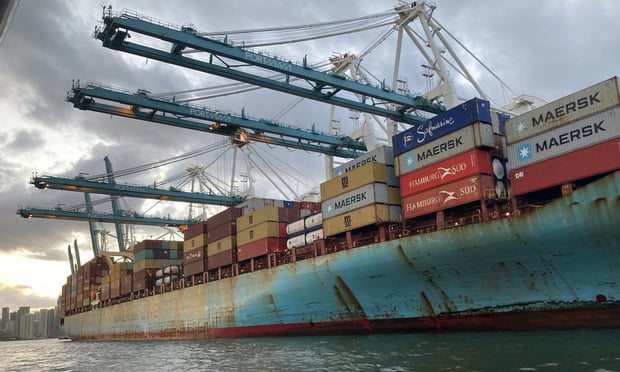Top American Ports Log Third-Busiest Year on Record

As shippers pulled freight forward amid labor and tariff uncertainty last year, North America’s top 15 ports logged their third-busiest year on record. Container volumes increased 11.2% for the year to 61.3 million twenty-foot equivalent units (TEU) across the top 15 ports, according to Savills’ 2025 port report.
All ports saw volume gains other than Baltimore and Montreal, the report said. Los Angeles and Long Beach had the strongest volume growth, benefiting from diverted cargo ahead of the International Longshoremen’s Association (ILA) planned strike in October that impacted East and Gulf Coast ports.
Savills said shippers pulled cargo forward in response to expected tariff uncertainty as President Trump took office.
Other port disruptions contributed to an 83% drop in container shipping rates toward the end of the year after they tripled early in 2024. These disruptions included a 10-day work stoppage in Montreal and Vancouver, as well as a rail strike, which forced cargo reroutes. Seattle received much of Vancouver’s diverted freight, according to the report. Meanwhile, the port of Manzanillo in Mexico had trouble keeping up with rising volumes. It responded with a $3.2 billion investment to double its capacity, said the report. And the Key Bridge collapse in Baltimore added logistical challenges to the nation’s port system, while weather events and system failures impacted ports in Savannah and Charleston.
Trade diversification accelerated during 2024, as U.S.-China cargo volumes continued to decrease. This could impact Long Beach and Los Angeles, both of which are more reliant on China, with more than half of their imports originating there. However, that share is steadily shrinking as businesses adjust their supply chains, according to Savills.
Warehouse markets continued to soften, particularly emerging port markets. Charleston and Savannah had the highest vacancy rates of all major ports at 17.6% and 12.1% respectively, after the two cities enjoyed levels below 2%, two years ago. Savills said recent volume gains should drive a demand rebound over the coming quarters.
Occupiers continue to benefit from more favorable leasing terms and a relatively quiet labor market expected in 2025. Shippers will continue to front-load freight, and trade between U.S. ports and China is expected to decline further. In addition, recent higher container volumes will translate into higher warehouse demand, Savills predicted.
“Uncertainty continues to challenge supply chain planning and strategy, making it difficult for companies to determine whether complex/large scale shoring initiatives or strategically diversifying suppliers is the right long-term move,” said J.C. Renshaw, head of supply chain consulting in North America for Savills. “In response, many are taking short-term steps like pulling freight forward to manage risk. With organized labor stability, seemingly in place, both port markets and inland hubs will play a key role in keeping goods moving efficiently.”
Source: GlobeSt/ALM